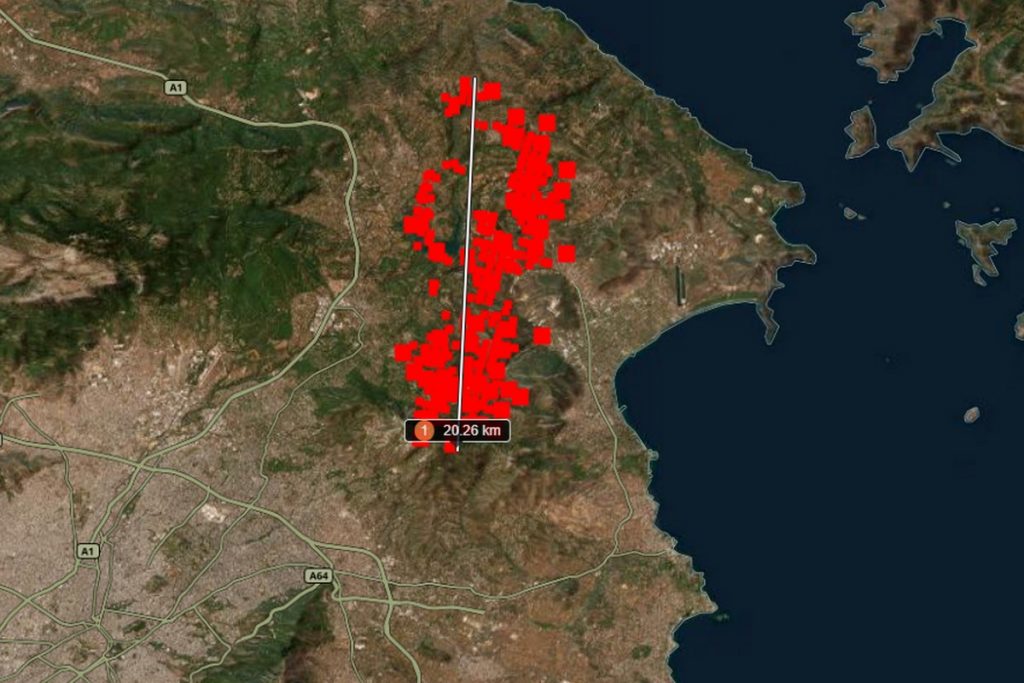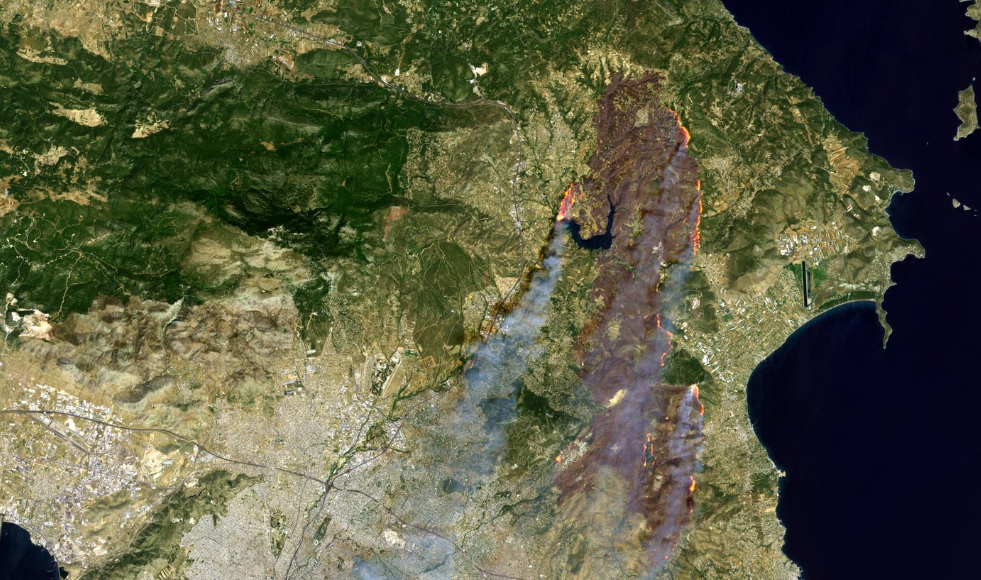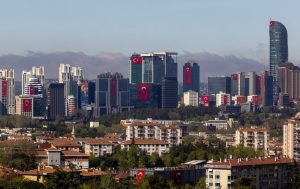Copernicus, the European Union’s Space programme observation component shared a satellite image on its official social media X (formerly Twitter) account of the extent of the devastation caused by the wildfires that broke out in Attica on Sunday.
In the post, Copernicus explains: “On 11 August, a large wildfire burned out of control in Attica, Greece. The fire has affected at least 10,000 hectares and forced thousands of people to flee their homes.
This Copernicus Sentinel-2 image, acquired on 12 August at 09:05 UTC (12:05 Greek local time), shows the ongoing blaze a few kilometres from the centre of Athens. It combines natural colour with shortwave infrared bands to highlight the fire fronts (in red tones) and the burnt areas (dark browns). Pushed by strong winds, the fire has produced a smoke cloud extending more than 300 km southwest towards Libya and covering the eastern part of Athens.”
On the 11th of August, a large wildfire burned out of control in Attica, Greece. The fire has affected at least 10,000 hectares and forced thousands of people to flee their homes.
Read more:https://t.co/VYw2OCmm0H#Φωτιά pic.twitter.com/fJ0oyrQl57
— Copernicus EU (@CopernicusEU) August 13, 2024
It estimated that the blaze, which has been rapidly ravaging the northeast region of Attica since over the past three days, has so far scorched approximately 10,000 hectares of land, including farmland, round 100 houses and dozens of businesses and vehicles, while also claiming the life of a 60-year-old woman.
The fiery inferno has also caused immeasurable damage to the natural environment, while the loss of animal life has been equally tragic.
The first flames erupted in Varnava and, fueled by strong winds, created a massive unified front in northeastern Attica, burning through Penteli, Grammatiko, Kapandriti, Marathon, Agios Stefanos, Drosia, Dionysos, Stamata, and Nea Makri. Yesterday, the flames reached the urban fabric, setting fire to Vrilissia, Chalandri, and Gerakas.
Copernicus is the Earth observation component of the European Union’s Space programme, looking at our planet and its environment to benefit all European citizens. It offers information services that draw from satellite Earth Observation and in-situ (non-space) data.
The European Commission manages the Programme. It is implemented in partnership with the Member States, the European Space Agency (ESA), the European Organisation for the Exploitation of Meteorological Satellites (EUMETSAT), the European Centre for Medium-Range Weather Forecasts (ECMWF), EU Agencies and Mercator Océan, the European Environment Agency (EEA), the Joint Research Center (JRC).




